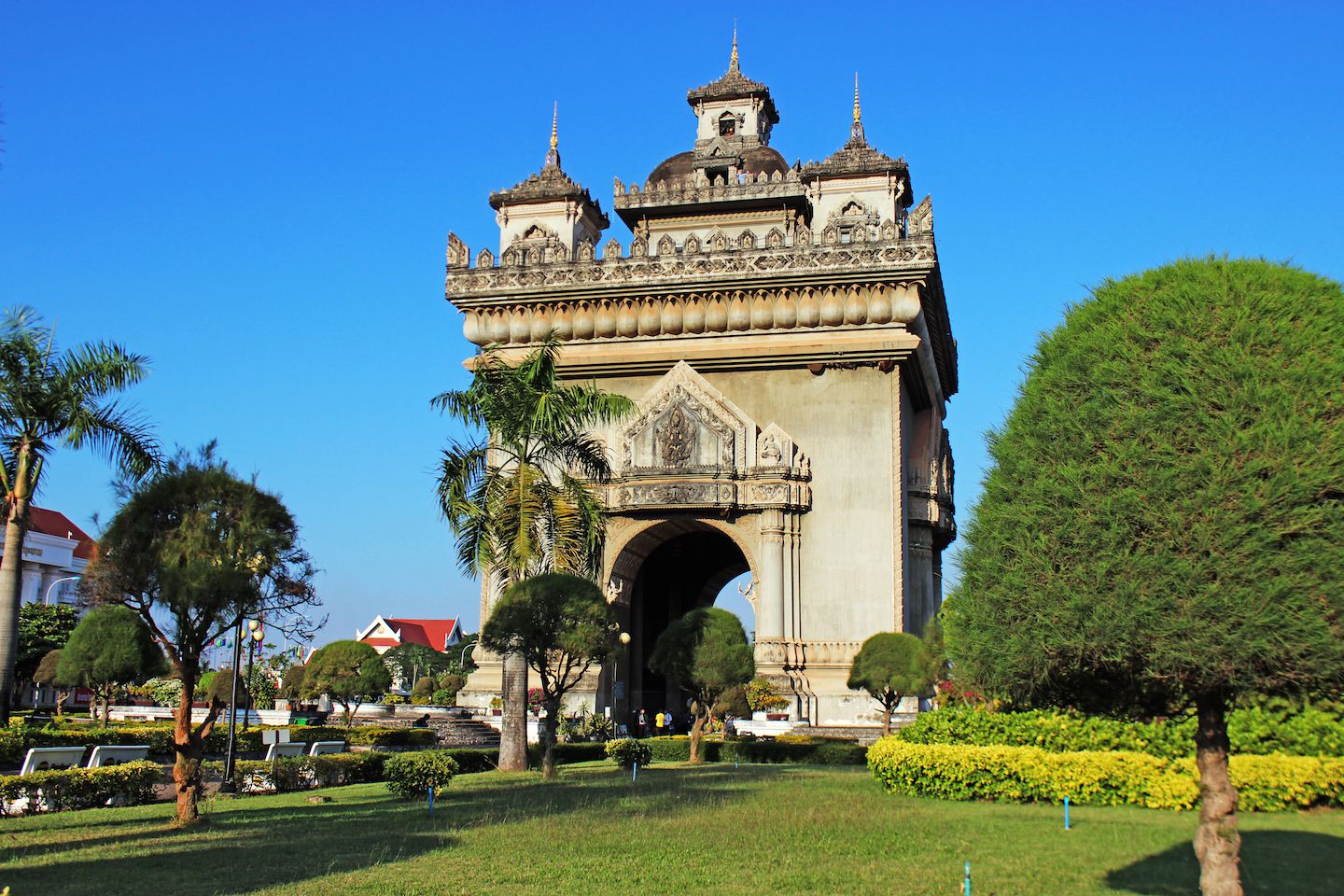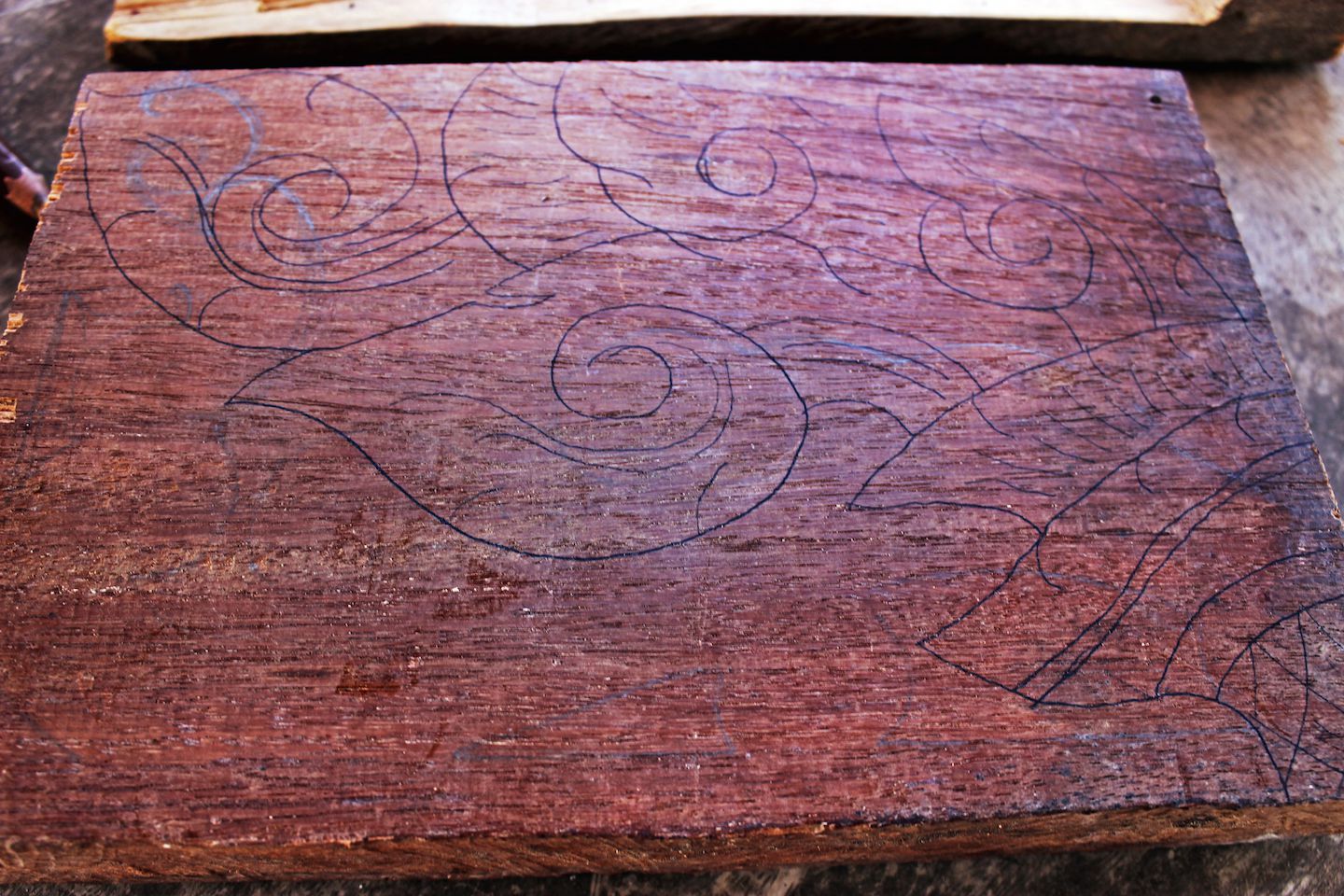The capital city of Laos, Vientiane doesn’t offer that many attraction for tourists as compared to other capital cities in SE Asia or even Luang Prabang. It is often just used as a transition point into Thailand or a place to catch your breath from the insane bus rides it takes to get here. We spent a few days in the city to explore what it had to offer and we did not regret it.
Pha That Luang
The elegant and beautiful Pha That Luang is the most important structure in Laos, a symbol of both Lao Sovereignty and the Buddhist religion. Pha That Luang is showcased in the national emblem, which has been present everywhere, including the Lao currency. Legend says that Pha That Luang was build in the 3rd century under the orders of the great Indian emperor Ashokan to house the breastbone of Buddha himself.

We walked around the monument, and even though it was symmetric, we didn’t get tired of the view. The golden stupas shined bright and high in the skies of Vientiane. We felt inspired by the persistence of the Lao people, who rebuilt the monument multiple times, especially after being destroyed in the wars that desolated the country.

Patuxai (Victory Gate)
The Lao version of the Arc de Triomphe, Patuxai was built to commemorate the Lao people who died during the independence war against France. The area surrounding the gate was very beautiful and seemed to be a popular place to chill for the Lao people.

We climbed to the top of the gate for a panoramic view of the city. Seeing Vientiane from above was nice, but as there was not too much to see, we came down shortly.

One funny fact about Patuxai is that it was built using cement donated by the US, to build a new airport. Instead, the Lao people built the gate and today it is know as the “vertical runway” among expats.

Wood Carving with Backstreet Academy
Since Vientiane lacked a decent number of attractions, we looked around for other activities in town and Backstreet Academy came up in our research. Backstreet Academy is an organization that provides unique travel experiences by pairing tourists with a master in local crafts (sketching, dancing, cooking, etc). Not only do you learn a new skill, you also interact with locals – creating new connections and supporting them in their businesses. From all the available options in Vientiane, we chose wood carving. Both Julie and I thought that was interesting and we probably wouldn’t try it elsewhere.
We were picked up from our hotel and driven to the school where we met our teacher for the afternoon and two volunteers who were our translators, since the teacher didn’t speak English. After the initial greetings, we were shown some examples of designs to pick from that we would attempt to carve ourselves during the course of 4 hours. The designs seemed quite complex, considering that it was our first time wood carving and we had zero experience.

We chose our designs – I picked a carving of a water buffalo while Julie chose this fire/roof tip design. The first step was to draw the designs on paper to later transfer onto the wood. When I say “we drew,” what I actually mean is that Julie drew hers, and the teacher drew mine, since I was struggling with mine.

We then used carbon paper to copy the drawing onto the wood and finally picked up a V parting tool and a mace to start carving the contour of the drawing! The initial hits were easy, as there was plenty of room for mistakes since we were removing most of the wood anyways. With the contour done, we used allongee gouges to remove big chunks of wood at a time in order to give the sculpture more details and some depth. Our strikes weren’t that precise and what should be a fast effortless process took a lot of energy and time.

Seeing that we wouldn’t be able to finish the carving on time, the teacher “helped” us and did a lot of the more detailed carving, basically fixing any of our mistakes and actually making it look pretty. Even though the teacher was doing a lot of our work, this time was a great opportunity for us to interact with the two volunteers and get to know them better and we were also shocked to learn that we were the first ones to ever sign up for the wood carving course.

When the carving was practically done, we were instructed to sand our pieces to get rid of the coarse edges and splinters, giving the carving a final touch.

Even though we didn’t expect to become masters in wood carving in only 4 hours, it was a great opportunity to try something new and interact with locals. The course was not well-designed for those brand new to wood carving, but we had fun anyway. I recommend Backstreet Academy activities for everyone in the cities offered.

Vientiane was certainly not the best city for sightseeing, but it still provided us with memorable activities and experiences. From the capital, we headed south to Konglor Cave.
For more pictures from Vientiane, please visit the gallery!

